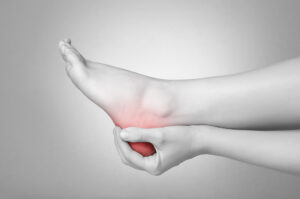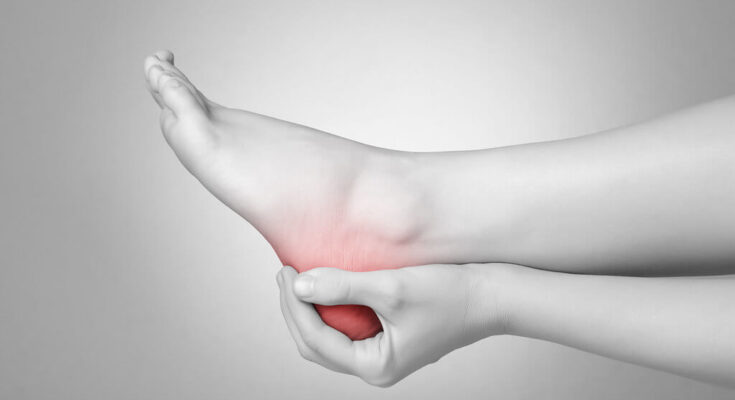The Surging Popularity of Foot Orthotic Insoles
Did you know that the global market for foot orthotic insoles is projected to reach USD 9.44 Bn by the end of 2034?
This figure is huge and is driven by the rise in cases of plantar fasciitis and flat feet among the population.
Foot orthotic insoles, also known as footbeds or shoe inserts are designed devices that offer support and cushioning to reduce foot pain and also improve the alignment. This is becoming very common in various countries. Moreover, these can be customized and also purchased over the counter, hence availability is not an issue. These are commonly used to address various foot conditions and injuries.
In recent years, we have witnessed the rise in foot orthotic insoles and this is driven by various factors such as consumer preference towards preventive healthcare.
- For example, consumers have been highly proactive towards addressing foot issues before they lead to more serious issues. Not only this, various changes in manufacturing technologies and advancements in the material scene have also led to a rise in durable insoles.
How Are Technological Advancements Shaping Consumer Preferences in the Foot Orthotic Market?

Technological advancements have a huge impact on this market. Innovations in material science have made a huge opportunity for innovation in the industry. For instance, now advanced materials are being used such as memory foam, EVA (ethylene-vinyl acetate), and thermoplastic polyurethane (TPU).
Why are these preferred? Well, these materials provide enhanced cushioning, durability, and moisture-absorbing capabilities. This not only improves overall comfort and usability for users.
Another example is memory foam which is known for its ability to form the shape of the foot. Well, this is a preferred choice nowadays for many who are seeking comfort in their footwear.
EVA, a lightweight and flexible material, offers excellent shock absorption, making it ideal for athletic and everyday use. Meanwhile, TPU combines the benefits of durability and flexibility, giving long-lasting support and comfort.
Not only this, but customization has been impacted by various 3D technologies such as 3D scanning and printing. How it works? – Well, first the precise shapes are digitally captured and then measurement of an individual’s feet is taken.
Manufacturers can also create insoles that can specifically accommodate their unique shapes and morphology. As personalization is accepted in every industry, it’s the same in this industry too. This not only brings comfort but also addresses various issues such as overpronation or high arches.
To provide an example – Companies such as Aetrek offer 3D scanning technology in retail. This also allows innovation to get detailed foot scans for different foot shapes.
3D printing has actually revolutionized the industry, as it enables the creation of highly customized orthotics that perfectly match a person’s foot shape and their biomechanics. Further AI-powered foot scanning technology, allows for a more accurate measurement. The data-driven approach can help in manufacturing more precise orthotic design for the user.
Top Consumer Countries Driving the Foot Orthotic Market
The top five consumer countries driving this market include the United States, Germany, China, Japan, and the United Kingdom.
- In the US, for instance, the aging population and rising obesity rates contribute to higher incidences of foot-related ailments, boosting the demand for orthotic solutions.
- In Germany, known for its robust healthcare infrastructure, there’s a strong preference for high-quality, medically certified orthotic products.
- China and Japan are witnessing a surge due to growing urbanization and lifestyle changes, where comfort and health-conscious choices are becoming increasingly important.
(Get more insights on the factors boosting Foot Orthotic Insole sales in these countries)
The preference for comfortable footwear and rising awareness of foot health issues among the urban populace are key factors driving this expansion. Moreover, these regions’ initiatives promoting sports and fitness activities have boosted the demand for performance-oriented orthotic insoles.
What Are the Biggest Challenges and Opportunities in the Evolving Foot Orthotic Market?
Complex regulations and varying consumer preferences across the globe are the major challenges in the market. For example, customization is a key challenge as consumers are seeking personalized ways to fit their unique foot anatomy. Also, the competition is evolving rapidly and due to digitalization, changes are frequent.
Moreover, these challenges offer opportunities for various key players in the market. These lead to market innovation and expansion. Key companies in the market are using various advancements and also involving sustainable materials in their products to gain a competitive advantage. These partnerships with healthcare providers and podiatrists for prescription-based sales have opened various new growth opportunities for the key players in the market.
Future Outlook of the Foot Orthotic Insole Industry
Looking ahead, the foot orthotic insoles market is expected to drive sales and is driven by various factors such as the aging population and majorly, growing awareness for foot health issues across the globe. Consumer’s preferences for comfort and customization are also expected to boost sales.
Sustainability is an emerging factor that is going to influence consumer choices. The effect of climate change is evident and consumers are attracted to products that contribute to a sustainable environment. This shift towards sustainable practices not only meets regulatory requirements but also enhances brand reputation and consumer trust.
Key players can position themselves strategically by adopting various advancements, adopting customization, and also addressing regional preferences. Ultimately, foot orthotic insoles are not just products; they are integral components of proactive healthcare management, offering comfort, support, and improved quality of life to millions around the globe.



